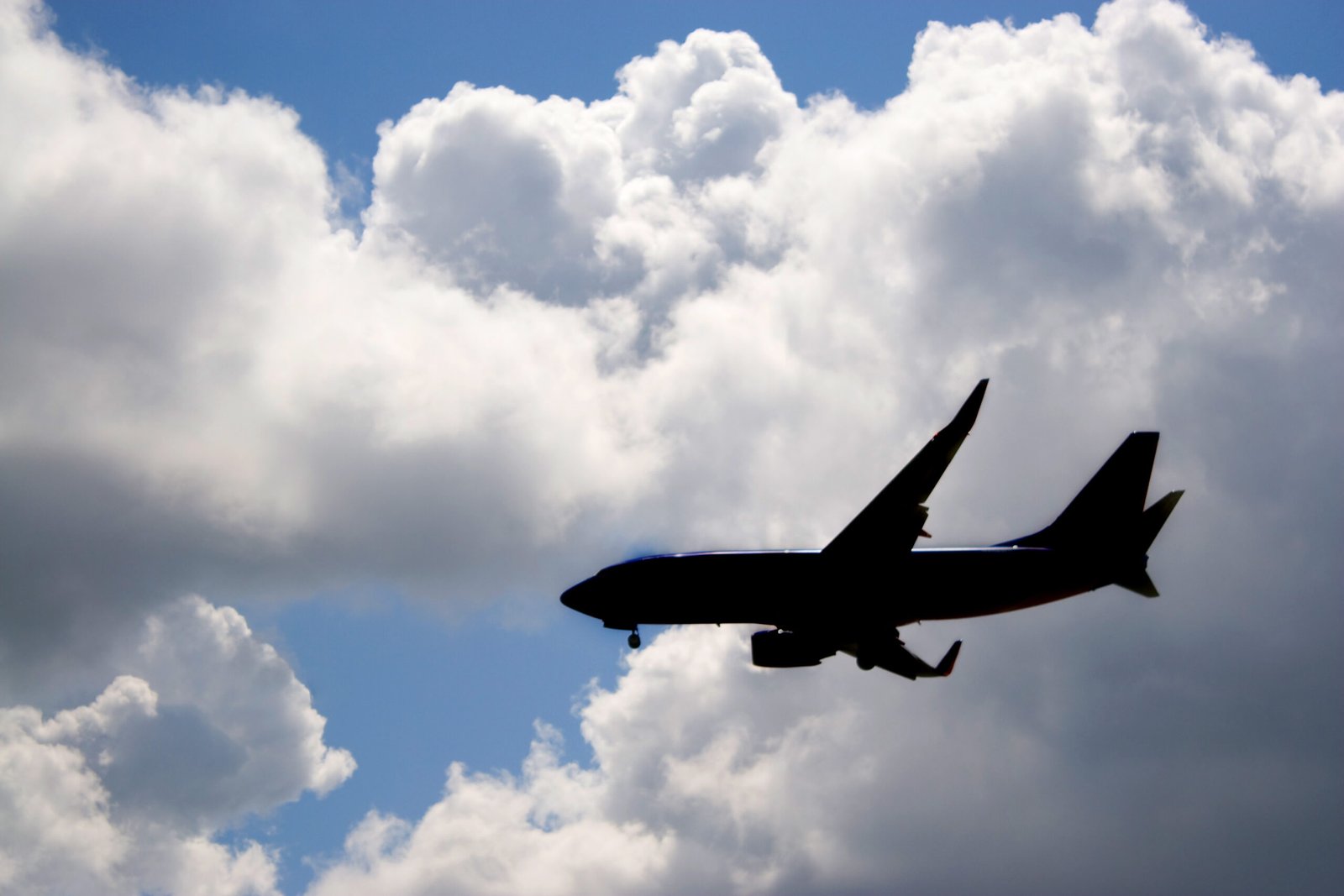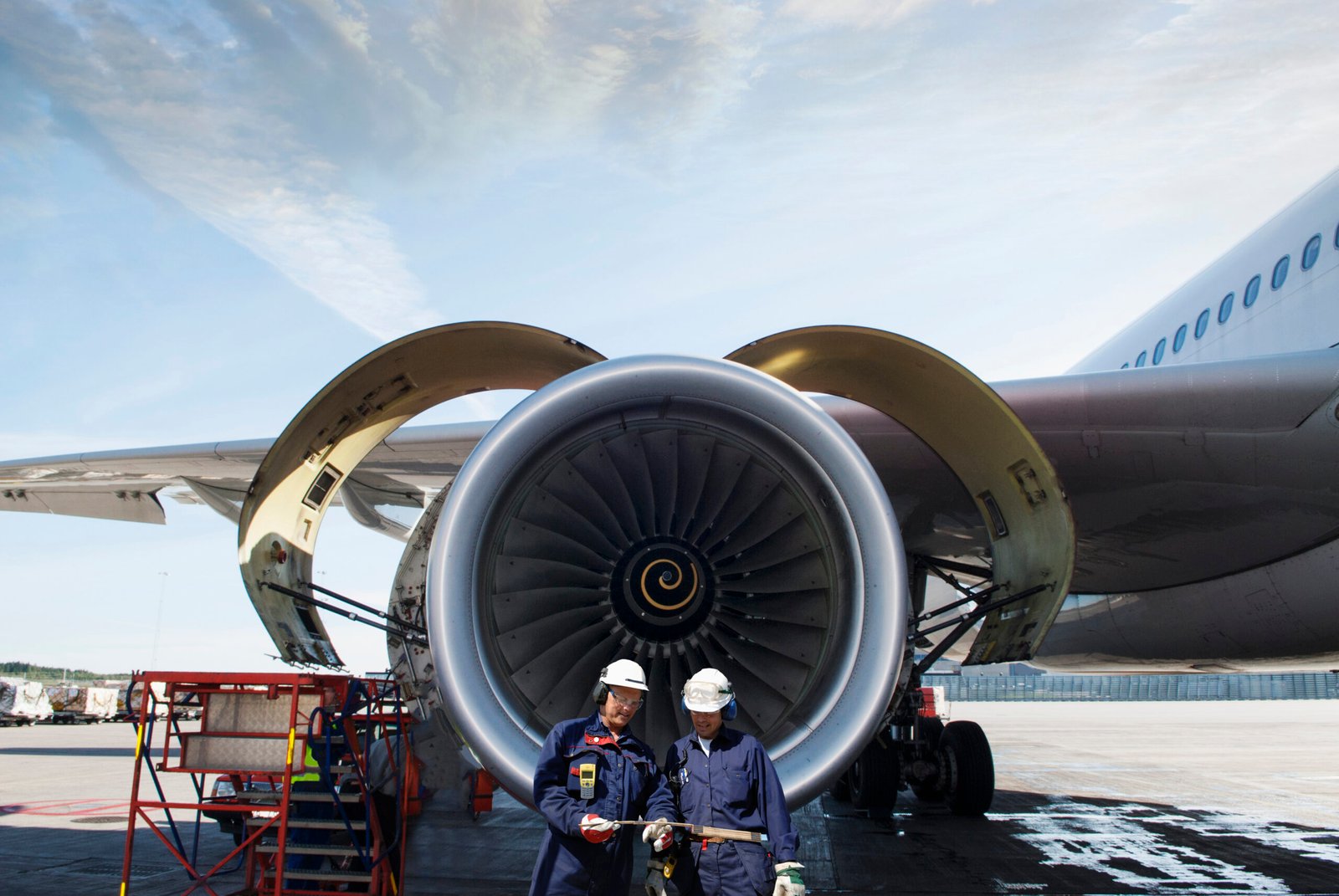Aviation Resources
Soaring Above: The Future of Sustainable Aviation and Green Technologies
As humanity continues to grapple with climate change, the aviation industry is not standing still. With a growing focus on sustainability, advancements in green technologies are setting the stage for a new era in flight. From pilot training initiatives to innovative aircraft design, the future of aviation is bright—and green.
First and foremost, let’s talk about the pilots of tomorrow. As we shift towards more sustainable aviation practices, training programs are evolving accordingly. Pilot and RC drone training are becoming increasingly popular career paths for those interested in entering this dynamic field. Flight schools now integrate eco-friendly practices into their curriculums, focusing on energy-efficient flying techniques and emphasizing the importance of reducing carbon footprints.
Moreover, with the rise of unmanned aerial vehicles (UAVs), aspiring aviators have a plethora of opportunities at their fingertips. Training programs for remote-controlled drones encompass everything from basic piloting skills to advanced navigation techniques. Many reputable flight schools offer comprehensive courses that cover regulations, safety protocols, and even environmental impacts—ensuring that future drone operators are equipped with both technical expertise and ecological awareness.
The demand for skilled pilots is accompanied by an increasing need for qualified evaluators who can assess various flight training programs. Potential students often find themselves overwhelmed with options; therefore, thoughtful reviews play a crucial role in helping them make informed decisions. Institutions now host forums where experienced pilots share insights about different training facilities, equipment quality, available mentors, and overall experiences.
These reviews help paint an accurate picture of what prospective students can expect from their chosen program while shedding light on how environmentally conscious these institutions are becoming in light of recent developments in sustainable aviation technologies.
As we soar higher into the skies of tomorrow’s aviation landscape, it’s also essential to consider the role of aviation brokers and insurance companies in promoting sustainability. These entities play a significant role in facilitating eco-friendly practices by offering tailored policies that reward greener operations. For example, many brokers now provide incentives for operators who invest in fuel-efficient aircraft or implement strategies that minimize emissions.
Insurance rates can vary widely based on an operator’s commitment to sustainability; companies often view eco-friendly measures as indicators of reduced risk. By aligning financial benefits with environmental responsibility, insurance providers encourage airlines and private operators alike to adopt greener technologies—ultimately contributing to lower global emissions across the board.

Furthermore, as technology advances rapidly—think electric propulsion systems or biofuels—the risk landscape shifts too. Insurance companies must adapt their offerings accordingly while ensuring they remain competitive within the market—and this adaptability could serve as a catalyst for further innovation within sustainable aviation.
In conclusion, as we venture into an era marked by heightened ecological concerns and technological breakthroughs, it’s clear that sustainable aviation isn’t just an idealistic notion—it’s becoming our reality. From nurturing skilled pilots through cutting-edge training programs to fostering relationships between brokers and insurers that promote green strategies—the trajectory ahead looks promising indeed! Together we can embrace this journey toward a cleaner sky while redefining what it means to take flight responsibly.
Wings of Change: How Aviation Is Revolutionizing Global Travel
In an era where the world seems to shrink with every technological advancement, aviation stands as a beacon of innovation and efficiency in global travel. The advent of new training programs, the growth of drone technology, and the expanding role of aviation brokers and insurance companies are reshaping how we navigate the skies. Let’s dive deeper into how these elements are not just enhancing the aviation landscape but also influencing careers and safety standards.

One cannot discuss the evolution of aviation without highlighting the burgeoning field of pilot and remote-controlled (RC) drone training. As air travel becomes more integral to our lives, there is a pressing need for skilled professionals who can operate aircraft safely and efficiently. Flight schools across the globe have ramped up offerings, introducing comprehensive programs that cater to aspiring pilots as well as those interested in mastering drone technology.
Pilot training has become more accessible than ever. Many institutions provide flexible schedules, allowing students to balance their education with personal commitments. In addition to traditional flight schools, online courses have emerged, enabling aspiring aviators to grasp theoretical concepts from anywhere in the world. Moreover, hands-on flight training programs are tailored to simulate real-world scenarios, ensuring that future pilots are equipped with essential skills before they take flight on their own.
For those captivated by drones, specialized RC drone training programs have surged in popularity. As businesses increasingly integrate drones into their operations—from agriculture to cinematography—qualified operators are in high demand. These courses often encompass everything from basic piloting techniques to advanced aerial photography tactics, ensuring participants gain a nuanced understanding of this rapidly evolving field.
However, it’s not just about training; reviewing flight programs has become critical for prospective students aiming for excellence. Websites and forums dedicated to pilot education allow individuals to share experiences and insights about various schools’ curricula, instructors’ expertise, equipment quality, and overall program satisfaction. Such transparency empowers future aviators to make informed decisions about where they invest their time and money.
Shifting gears from individual training paths to broader industry dynamics brings us to aviation brokers and insurance companies—key players in maintaining safety standards within this expansive sector. As air traffic increases worldwide, so do concerns regarding liability and risk management. Brokers specialize in navigating complex insurance landscapes for both commercial airlines and private pilots alike.
The role of these brokers extends beyond mere transactions; they serve as consultants who help clients understand coverage options tailored specifically for their needs—from hull coverage on aircrafts to liability protections against third-party claims during flights or ground operations. With customized solutions becoming commonplace due to varying operational requirements across different regions or types of flights (commercial versus private), having knowledgeable brokers can significantly enhance an operator’s peace of mind.
Furthermore, insurance rates fluctuate based on numerous factors including flying experience, type of aircraft operated, geographic location—and even economic conditions that affect general market trends. Understanding these intricacies ensures that both seasoned pilots and newcomers can secure reasonable premiums while safeguarding against unforeseen events.
In conclusion, as we soar into a new age defined by innovations in pilot education and advancements in drone technology alongside professional guidance from aviation brokers—it’s clear that global travel is being revolutionized one flight at a time. The wings of change are not merely lifting planes but also propelling careers forward while ensuring safety remains paramount throughout this exhilarating journey through the skies.
Skybound Adventures: Exploring Unusual Flight Paths Around the World
The world of aviation is a vast and exhilarating realm, brimming with fascinating opportunities for those daring enough to explore its heights. From aspiring pilots to aviation enthusiasts, the journey begins with education and knowledge. Let’s take a look at the various avenues available in aviation schools, delve into popular aviation blogs and websites, and discover FAA-approved flight schools and simulators that can help you kick-start your skyward adventure.
### Types of Aviation Courses
Aviation education comes in many flavors, catering to diverse interests within the field. Here are some common types of courses offered by aviation schools:
1. **Private Pilot License (PPL)**: This foundational course introduces students to fundamental flying skills, regulations, and navigation techniques necessary for piloting light aircraft.
2. **Commercial Pilot License (CPL)**: For those aiming for a career in aviation, this course builds on previous training and focuses on advanced flying skills needed for commercial operations.

3. **Airline Transport Pilot License (ATPL)**: The pinnacle of pilot certifications, ATPL programs prepare students for commanding large passenger jets or cargo aircraft.
4. **Aircraft Maintenance Engineering**: A vital aspect of aviation involves maintaining aircraft safety and performance. Programs here cover repair techniques, systems management, and regulatory compliance.
5. **Aviation Management**: More than just flying planes, this course dives into the business side of aviation—handling operations, marketing strategies, and financial management within an airline context.
6. **Flight Dispatching**: This unique program trains individuals to manage flight plans while ensuring safety regulations are adhered to before takeoff.
7. **Aeronautical Science**: Focusing on the theoretical aspects of flight dynamics and engineering principles; it’s perfect for those interested in pursuing careers as aeronautical engineers or researchers.
### Must-Visit Aviation Blogs & Websites
The digital landscape offers treasure troves of information about all things aviation! Here are some must-follow blogs and websites that fuel your passion:
**Airliners.net**: An extensive community where enthusiasts share photos, trip reports, and discussions regarding airlines worldwide.
**Flying Magazine**: Offers articles on piloting techniques, gear reviews, safety tips, industry news—everything a pilot needs!
**AVweb**: A rich source for news related to general aviation including podcasts that keep you updated while you’re on-the-go.
**Plane & Pilot Magazine**: Focuses specifically on user-friendly insights into small aircraft with practical advice tailored toward pilots.
**The Points Guy**: Perfect for those who love traveling by air but want to maximize their miles; it provides tips on travel hacking using frequent flyer programs effectively.
### FAA Flight Schools & Simulators
If you’re ready to take your passion from theory to practice through FAA-approved training institutions or simulators tailored towards budding aviators:
1. **ATP Flight School**: With numerous locations across the U.S., ATP provides comprehensive training paths leading from zero experience up through airline readiness.
2. **Embry-Riddle Aeronautical University**: Renowned globally for excellence in aerospace education; they offer degree programs across various disciplines within aviation.
3. **Boeing Academy**: Known for pioneering innovative simulator technology allowing students hands-on experience without leaving the ground!
4. **FlightSafety International**: Offers state-of-the-art simulation facilities that replicate real-world flying conditions to ensure thorough preparation for certifications.
As you embark on your journey into the skies—whether it be as a pilot or simply an enthusiast—these resources stand ready at your fingertips! Each path offers unique experiences that can lead you toward extraordinary adventures high above our earthbound existence! So buckle up; it’s time to navigate uncharted territories amongst the clouds!
Behind the Cockpit: A Day in the Life of a Pilot
Ever wondered what it’s like to soar through the skies, navigating vast expanses of blue? For many aspiring aviators, the journey begins not in the clouds but in classrooms and simulators across the country. Aviation schools offer a variety of courses designed to equip future pilots with essential skills and knowledge. From ground school to flight training, these programs come in different flavors tailored to meet diverse needs.
Aviation schools typically provide several types of courses. **Private Pilot License (PPL)** programs allow students to learn the basics of flying and gain their first certification. Next up is the **Instrument Rating**, which trains pilots to fly under instrument flight rules – crucial for navigating through clouds and poor visibility. For those aiming for commercial aviation careers, a **Commercial Pilot License (CPL)** course is vital, providing deeper insights into advanced flying techniques, navigation systems, and aircraft operations. Additionally, aspiring airline pilots often pursue an **Airline Transport Pilot (ATP)** certificate, which requires extensive flight hours and knowledge about complex aircraft systems.
Beyond traditional classroom instruction, modern technology plays a pivotal role in pilot training. Flight simulators have revolutionized how trainees experience aviation without leaving solid ground. These realistic setups mimic various aircraft scenarios, allowing students to practice emergency procedures and navigation techniques safely. FAA-approved flight schools incorporate simulators into their curricula to enhance learning outcomes while ensuring compliance with regulatory standards.


While educational institutions lay the groundwork for budding aviators, connecting with fellow enthusiasts can further enrich one’s aviation journey. Numerous blogs and websites curate valuable information on current trends, tips for aspiring pilots, industry news, and personal experiences that can inspire newcomers.
Some popular aviation blogs include **Airways Magazine**, which covers everything from aircraft reviews to travel stories; **The Aviation Herald**, dedicated to safety incidents; and **Flying Magazine**, offering practical advice on flying techniques. Websites like **PilotJourney.com** serve as rich resources for aspiring pilots seeking guidance on flight paths—figuratively speaking—and career options within aviation.
Social media has also become an incredible platform for sharing information within this community. Platforms like Instagram feature accounts such as @pilotlife and @aviationphotography that showcase stunning aerial shots alongside captivating pilot stories. On Facebook, groups like “Aviation Enthusiasts” provide spaces where individuals share experiences or seek advice about training programs or specific aircraft.
As you navigate your path toward becoming a pilot or simply indulge your love for aviation from afar, tapping into these resources will prove invaluable. The world of aviation extends beyond flight; it encompasses shared experiences among passionate individuals dedicated to mastering the skies.
In conclusion, embarking on a career as a pilot involves more than just logging hours in the cockpit; it requires dedication towards education through various aviation courses offered at specialized schools across America. With robust support networks found through blogs and social media channels alike fostering connections among aviators everywhere—from novices eager to learn all they can about flying—to seasoned professionals sharing their wisdom—the sky’s truly not the limit! So buckle up; your adventure awaits!
From Biplanes to Drones: The Evolution of Flight Through the Ages
Aviation has always been a field that captivates the imagination, marking significant milestones in human innovation. From the rudimentary biplanes of the early 20th century to today’s sophisticated drones, the evolution of flight is a remarkable journey filled with technological advancements and educational opportunities. As we continue to explore this fascinating domain, aviation schools have become essential in shaping aspiring aviators and enthusiasts.
When it comes to aviation education, various types of courses cater to different interests and career goals. For those looking to become pilots, traditional flight training programs offer comprehensive curricula that cover everything from basic flying skills to advanced navigation techniques. Many schools also provide specialized courses for commercial pilots, instrument-rated pilots, and even airline transport pilot (ATP) certification.

In addition to pilot training, there are programs focused on aircraft maintenance and repair—these often include hands-on experiences in workshops or hangars where students can work on real aircraft. Similarly, air traffic control programs equip students with vital skills needed for managing air traffic safely and efficiently. With the rise of unmanned aerial vehicles (UAVs), many aviation schools now offer drone piloting courses as well as UAV operations management classes.
To stay connected and informed about aviation trends, numerous blogs and websites serve as valuable resources for both professionals and hobbyists alike. Notable blogs like “The Aviation Herald” provide insights into aviation safety issues through detailed accident reports while “AirlineReporter.com” offers captivating stories about airline travel experiences combined with industry news. Websites such as “Flying Magazine” host extensive articles covering various topics from aircraft reviews to pilot tips.
Social media platforms further enhance community engagement within the world of aviation. On Instagram, accounts like @aviationdaily showcase breathtaking aerial photography alongside informative infographics about aircraft specifications or flying tips. Meanwhile, Twitter boasts active discussions among aviators under hashtags such as #AvGeek or #PilotLife which allow users to share their experiences instantaneously.
For those seeking formal training in America, FAA-approved flight schools are a crucial part of the equation. The Federal Aviation Administration provides a list of accredited institutions that meet stringent standards for quality instruction in both ground school and flight training environments. These schools often feature state-of-the-art simulators that replicate real-life flying conditions without leaving the ground—a perfect tool for honing one’s skills before taking off into the skies.

Flight simulators have revolutionized how pilots train today; they enable immersive practice scenarios ranging from routine flights to emergency situations without risking lives or equipment. Many reputable FAA-certified facilities utilize advanced technology that accurately mimics cockpit layouts along with realistic weather patterns—creating an unparalleled learning environment for prospective aviators.
As we witness continued advancements in aviation technology—from electric planes being designed by visionary companies to autonomous drones performing complex tasks—the educational landscape must adapt accordingly. Whether you’re passionate about becoming a pilot or simply curious about UAV technology, diverse courses are available at various institutions across the country.
In conclusion, exploring the evolution of flight reveals not only technological progress but also highlights how education plays an integral role in shaping future generations within this dynamic field. With countless resources available through blogs, social media sites, FAA-approved flight schools, and specialized training programs dedicated solely to enhancing knowledge around aviation—there has never been a better time to embark on your own aerial journey!




